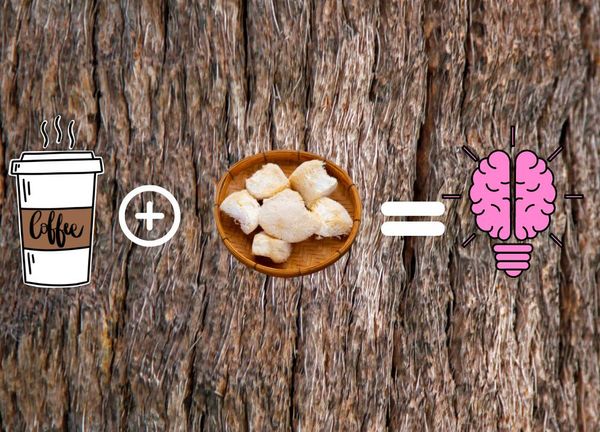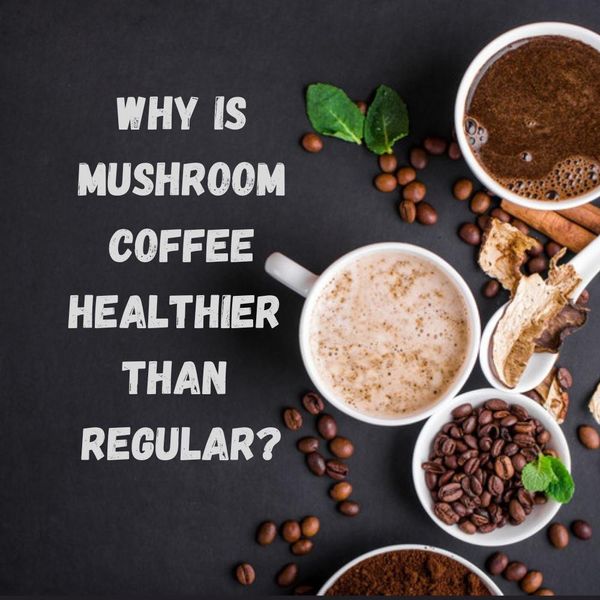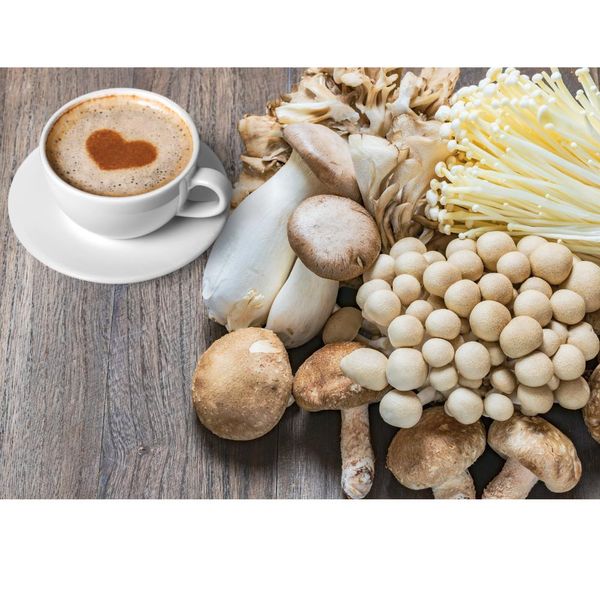Coffee is a staple beverage that many people rely on to start their day. However, brewing the perfect cup of coffee can be a challenge, especially when it comes to determining the correct amount of coffee to use per cup of brewed coffee. One of the most common questions that arise when brewing coffee is how many scoops of coffee per cup is the right amount?
While there is no right or wrong answer to this question, as it mostly depends on personal preference, there are general guidelines that can help achieve the perfect cup of coffee. The amount of coffee used per cup can vary depending on the strength of the coffee desired, the type of coffee used, and the brewing method. By understanding the different factors that can affect the amount of coffee used per cup, coffee enthusiasts can experiment and find the perfect coffee balance that suits their taste.
What is a Scoop of Coffee?

A coffee scoop is a small measuring spoon used to measure coffee grounds. It is typically included with coffee makers or can be purchased separately. The size of a coffee scoop can vary, but it is typically equivalent to 1 tablespoon or about 5 grams of coffee grounds.
While a coffee scoop can be a convenient way to measure coffee grounds, it is important to note that the size of the scoop can vary. Some coffee scoops may hold more or less coffee grounds than others, which can impact the strength of the coffee. It is important to use a consistent measuring tool to ensure consistent results.
One alternative to using a coffee scoop is to use a kitchen scale to measure the coffee grounds by weight. This can provide a more accurate measurement and ensure consistent results. A general rule of thumb is to use 1 to 2 tablespoons of coffee grounds per 6 ounces of water, but this can vary depending on personal preference and the type of coffee being used.
Factors Affecting the Number of Scoops per Cup
When it comes to brewing coffee, the number of scoops per cup can vary depending on several factors. Here are some of the most important factors that affect the number of scoops per cup:
Roast Level
The roast level of coffee beans can affect the strength and flavor of the coffee. Lighter roasts have a more delicate flavor and require more scoops per cup to achieve the desired strength. Medium roasts are the most common and require the standard one to two scoops of freshly ground beans per cup. Dark roasts have a bolder and more robust flavor, requiring fewer scoops per cup.
Grind Size
The grind size of coffee beans can also affect the strength of the coffee. Finely ground coffee requires fewer scoops per cup, as the smaller particles of ground beans extract more quickly. Coarsely ground coffee requires more scoops per cup, as the larger particles take longer to extract.
Brewing Method
The brewing method can significantly impact the number of scoops per cup. For example, French press coffee requires a coarser grind and more scoops per cup, while drip coffee makers require a finer grind, strong coffee, and fewer scoops per cup. Espresso machines require a very fine grind and a precise amount of coffee, typically around 7 grams per shot.
Overall, the number of scoops of coffee per cup is a matter of personal preference and can vary depending on the factors mentioned above. It's always a good idea to experiment with different scoops per cup ratios to find the perfect balance of strength and flavor for your taste buds.

Standard Measurements for Coffee Brewing
When it comes to brewing coffee, getting the right amount of coffee grounds is crucial to achieving the perfect cup. While there are different methods to measure coffee, using scoops is a common and easy way to do it. Here are the standard measurements for measuring coffee before brewing:
Metric System
In the metric system, coffee is usually measured by weight, in grams. A standard ratio is 1:18, which means 1 gram of coffee for every 18 milliliters of water. Here are the measurements for common coffee servings:
Coffee Serving Coffee Grounds (grams) Water (milliliters)
Single Cup (6 oz) 10 180
Two Cups (12 oz) 20 360
Four Cups (24 oz) 40 720
Imperial System
In the imperial system, coffee is usually measured by volume, in tablespoons. A standard ratio is 1:15, which means 1 tablespoon of coffee for every 15 fluid ounces of water. Here are the measurements for common coffee servings:
- Single Cup (6 oz): 1 tablespoon
- Two Cups (12 oz): 2 tablespoons
- Four Cups (24 oz): 4 tablespoons
It's important to note that these are just standard measurements, and the amount of coffee you use can be adjusted based on your personal taste preferences. Additionally, the type of coffee and brewing method can also affect the amount of coffee needed. Experimenting with different measurements and brewing methods can help you find your perfect cup of coffee.

Calculating the Number of Scoops per Cup
When it comes to making coffee, getting the right ratio of coffee to water is crucial to achieving the perfect cup. But how much coffee or many scoops of coffee should you use per cup? The answer depends on a few factors, including the desired strength of your coffee and the size of your cup.
A general rule of thumb is to use one scoop of coffee for every six to eight fluid ounces of water. However, if you prefer your coffee stronger, you can use one and a half to two scoops of coffee per six fluid ounces of hot water only. Here's a handy table to help you calculate the number of scoops of coffee you need based on the size of your cup:
Cup Size Water Coffee
6 oz 6 oz 1 scoop
8 oz 8 oz 1-2 scoops
10 oz 10 oz 2 scoops
12 oz 12 oz 2-3 scoops
Keep in mind that these are just guidelines and you may need to adjust coffee ratio and the amount of coffee you use based on your personal taste preferences. It's always a good idea to experiment with different ratios until you find the perfect one for you.
Another factor to consider is the type of coffee you're using. If you're using freshly- ground coffee beans, you may need to use fewer scoops since the coffee will be more flavorful and aromatic. On the other hand, if you're using pre-ground coffee, you may need to use more scoops since the coffee will be less potent.
Ultimately, the number of scoops of coffee you use per cup is a matter of personal preference. By experimenting with different ratios and types of coffee, you can find the perfect balance of strength and flavor to suit your taste buds.
Types of Brewing Methods

Coffee has become a daily ritual for many of us. It's our go-to drink to kick off the day or to give us a boost in the afternoon. But, have you ever wondered what type of coffee maker is best for you? There are so many different types of coffee brewers out there to choose from. To help you make the decision, we’ve put together descriptions of some of the most common types of coffee makers.
Drip Coffee Maker
Drip coffee makers are probably the most common type of coffee maker that you'll find in homes and offices. It's a simple and easy-to-use machine that brews coffee by dripping hot water over ground coffee. Drip coffee makers typically produce a large quantity of coffee in one go, which makes them ideal for households with many coffee drinkers.
French Press
The French Press, also known as a press pot, is a brewing device that requires a little bit of patience but produces lovely coffee with a full-bodied flavor. French Press coffee makers work by steeping ground coffee in hot water before pressing a plunger down to contain the coffee grounds and allow the coffee to be poured out without sediment.
Pour-Over Coffee Maker
Pour-over coffee is a brewing method for coffee gourmands who enjoy a fuller flavor than drip coffee makers can provide. These coffee makers produce coffee that is rich and robust with its fine water control and extraction method. The brew process involves pouring hot water over freshly ground coffee through a filtered cone that sits on top of the coffee cup.
Keurig Coffee Maker
The Keurig coffee maker is a low-hassle and straightforward option for brewing coffee. The Keurig system allows coffee drinkers to choose their preferred coffee blend in seconds without committing to a full pot. Keurig machines use small coffee pods, also known as K-cups, which come in different flavors and strengths.
Espresso Machines
Espresso machines make strong and flavorful coffee, perfect for any time of day. Espresso machines use pressurized water that is forced through the coffee grounds at a high speed to extract the rich and delicious beverage. Espresso machines come in a range of styles, from manual to automatic, to cater to all coffee brewing levels.
Choosing the right coffee maker for your needs comes down to your personal preference based on how you like your coffee brewed. Consider the capacity, convenience, and quality of the coffee brewed when choosing a device. Hopefully, after reading this, you'll be able to find the option that suits you best!
FAQs
What is coffee brew ratio?
Coffee brew ratio refers to the amount of coffee grounds used per unit of water when brewing coffee.
What is the most common coffee brew ratio?
The most common coffee brew ratio is 1:16, which means using 1 gram of coffee for every 16 grams (or milliliters) of water.
Does the coffee brew ratio affect the taste of coffee?
Yes, the coffee brew ratio can significantly affect the taste of coffee. A higher ratio will result in a stronger and more concentrated coffee while a lower ratio will result in a weaker and more diluted coffee.
What happens if I use too much coffee for my brew ratio?
If you use too much coffee for your brew ratio, your coffee will taste overly bitter and strong.
What happens if I use too little coffee for my brew ratio?
If you use too little coffee for your brew ratio, your coffee will taste weak and watery.
How do I measure my coffee and water for the brew ratio?
You can use a scale to measure your coffee and water by weight or measuring cups or a coffee scoop by volume.
Can the coffee brew ratio vary by brewing method?
Yes, different brewing methods can require different coffee brew ratios. For example, pour-over coffee typically requires a finer grind and a higher brew ratio, while French press coffee requires a coarser grind and a lower brew ratio.
Does the type of coffee bean affect the brew ratio?
Yes, the type of coffee bean can affect the brew ratio. Darker roasted beans typically require a higher brew ratio to balance out their stronger flavors.
Can I adjust my brew ratio to my personal taste preferences?
Yes, you can certainly adjust your brew ratio to your personal taste preferences. Experiment with different ratios and brewing methods to find your ideal coffee taste.
What is the best way to ensure consistency with my brew ratio?
Using a scale to measure your coffee and water by weight is the best way to ensure consistency with your brew ratio. This will guarantee that you use the same amount of coffee and water every time you brew, resulting in a consistent taste.
Conclusion
When it comes to determining how many scoops of coffee per cup, it ultimately comes down to personal preference. The general rule of thumb is to use one to two tablespoons of coffee grounds for every one cup of six to eight ounces of water. However, this can be adjusted based on how strong or weak you prefer your coffee.
It's important to note that the type of coffee you use can also affect the amount of coffee needed per cup. For example, a darker roast may require less coffee grounds than a lighter roast to achieve the same strength.
Additionally, the brewing method can also impact the amount of coffee needed. For example, a French press may require a coarser coffee grind and more coffee grounds than a drip coffee maker.
Experimenting with different ratios and brewing methods can help you find the perfect cup of coffee to suit your taste preferences. And remember, investing in a quality coffee scale can help ensure consistency in your coffee-making process.
For more tips and great coffee related products check out our other articles!








This post may contain affiliate links, which means Anchor Reviews may receive a commission if you purchase through my links, at no extra cost to you. It helps us to keep finding and writing about awesome products for you. Please read the full disclosure for more information.









